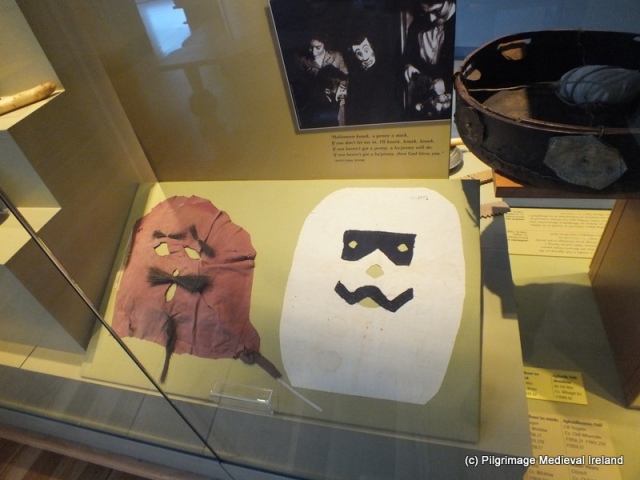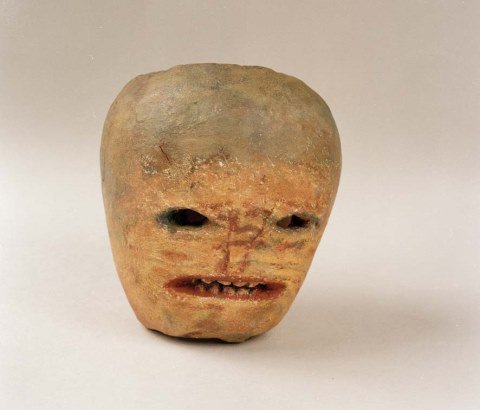Introduction to Halloween
The first day of winter is upon us, in ancient times this day was celebrated as the festival of Samhain ( 1st November). The eve of this day was also of great importance and was known as Oíche Shamhna ( night of Samhain) or Hallowe’en. The name Hallowe’en derives from the fact this is the evening before the Feast of All Saints (The Hallowed Ones).
Where I’m from everyone pronounces the ‘a’ in Halloween. I asked my parents about this and they told me this was how they and my grandparents had always pronounced the word. Ive been doing a lot of driving recently and I have noticed that everyone on the radio pronounces the ‘a’ as a ‘o’ saying Holloween. I wonder is this a new development?
Halloween Traditions
When I was a child Halloween was pretty low key in our house but great fun. We usually celebrated the event with our cousins who lived near by and we would play bobbing for apples, where a large basin of water was placed on the table and we each took turns fishing the apples out of the basin. This was no easy feat as you had to use your our teeth, keep your hands behind your back. We would eat lots of sweets and tell ghost stories. I don’t remember dressing up in costume but we always had a plastic masks that we bought at the pound shop or made from a cereal box. There was always barm brack a type of light fruit cake which I hated but would pretend to eat in the hope of getting the slice of cake with the coin inside. Traditionally, a ring and a coin were baked into the cake. If you got the coin would be rich and if you got the ring you would get married.
I visited the National Museum of County Life at Turlough Park Co Mayo this summer. The museum has a really interesting exhibition on the old Halloween traditions celebrated in Ireland. The wearing of masks is an old Halloween tradition in Ireland and the exhibition includes a number of Irish traditional Halloween Masks called Fiddle Faces. There was a long standing tradition of gangs of masked boys going to each farm house in the district in order to receive food or money, doing mischief if they were not well received.

Halloween Masks called Fiddle Faces at the National Museum of Ireland

Halloween Masks called Fiddle Faces at the National Museum of Ireland

Child wearing a Halloween mask from the RTE archives.http://www.rte.ie/archives/exhibitions/895-halloween/288361-halloween-test/
Hallowe’en was also known as ghost night or spirit night and the souls of the dead were expected to return to the family home. Evil spirits were also thought to be active and people avoided travelling alone on this night (Museum of Country Life website)
It not surprising then that special crosses were made and placed above the door to protect the home from bad luck for the coming year. This Halloween Cross is from Barr Thráú, Iorrais, Mayo and is on display at the National Museum of Ireland-Country Life.
Another very old tradition was the carving of turnips into a figure known a Jack O Lantern. In my opinion the turnips are terrifying when compared to the pumpkin.
According to folklore, the Jack O’Lantern is named after a blacksmith Stingy Jack who tricked the devil into paying for his drinks. Unable to enter heaven or hell when he died, the devil threw him a burning ember.He was left to wander the earth carrying it about inside a turnip – or should that be a pumpkin? (Fowler 2005)

Jack O Lantern on display at the Museum of Country Life Co Mayo
Irish immigrants took the tradition of Jack O’Lantern to America where pumpkins were substituted for turnips. The Jack O Lantern below was traditionally carved in (Fintown) Baile na Finne, County Donegal Gaelltacht, c. 1903 .

Jack O Lantern below was traditionally carved in (Fintown) Baile na Finne, County Donegal Gaelltacht, c. 1903 National Museum of Ireland .
In recent years in Ireland the turnip has been slowly replaced by the pumpkin which is now widely available in supermarket. There is a perception that the turnip is difficult to carve and the pumpkin is less work. There are however benefits to making the effort and carving a turnip for Halloween, turnips last longer then pumpkins when carved. In my opinion they have a lot more character then the pumpkin. You get more for your money, three turnips are the price of one pumpkin. You can also turn the turnip leftovers into dinner. My tip for anyone who wants to try carving a turnip is to use a melon baller to scope out the inside.
If you can I highly recommend a visit to the permanent Halloween exhibition at the Museum of Country Life.

Halloween Display at Museum of Country Life
For anyone who would like to find out more about Ireland Halloween traditions there is wonderful account provided by Irish Archaeology.ie also see the links below. Duchas.ie also has lovely presentation available as a pdf of old Halloween traditions in Ireland.

Duchas.ie presentation as pdf on Halloween traditions
The RTE Archives also have a really great collection of video and audio relating Halloween Customs and Traditions in Ireland. I really enjoyed this audio clip where
Folklorist Barbara O’Flynn tells Marian Richardson about the different ways Halloween is celebrated in urban and rural areas. She says bonfires and trick or treating are customs associated with the eastern half of Ireland, but they are now spreading throughout the country. Halloween was traditionally marked in the West of Ireland by playing practical jokes, like throwing cabbage against people’s doors or switching gates on farms.Divination is still widely practised, with four plates used to foretell death, marriage, prosperity or travel. The return of the dead remains a big part of Halloween, and an example of the overlapping of Christian and pagan traditions, which is seen throughout Irish folkore ( RTE Archive)
The tweet below also has links to the RTE Halloween Archives.
Happy Halloween everyone.
Further Reading On Halloween
http://www.museum.ie/Country-Life/Featured-Topics/Halloween
http://irishfireside.com/2011/10/27/halloween-finds-its-roots-in-irish-folklore/
Fowler, J. 2005.Turnip battles with pumpkin for Hallowe’en at http://news.bbc.co.uk/2/hi/uk_news/northern_ireland/4383216.stm



Fascinating… I agree about the turnip lanterns – far more spooky and creepy!
They are so creepy . Glad you liked the post
Have you ever made one? In Cambridgeshire where I was brought up they made them from mangelwurzels!
I found this article really interesting. Living in Marblehead , MA provides quite a different take! Houses/ front yards are decorated with all sorts of inflatables and accessories for the month of October and adults dress in costume and party as much as children. Another phenomenon is decorating to resemble a graveyard with all sorts it tombstones- that does not appeal to me at all!
I also say “a” in Halloween just like in hallow or hallowed 😀
Glad you liked it . Its funny was in east limerick today and lots of houses were decorated too. You wouldnt have seen that 20 years ago. think there is alot of influence from american films and TV shows here now and people are starting to copy alot of this from there. I think Halloween with “a” is the correct pronunciation as well 🙂
A mine of information, thank you. Both the masks and the old turnip heads are seriously scary!!
Your welcome glad you enjoyed it 🙂
Thanks for sharing!! Learned a lot!
Your welcome glad you found it useful
It was!!